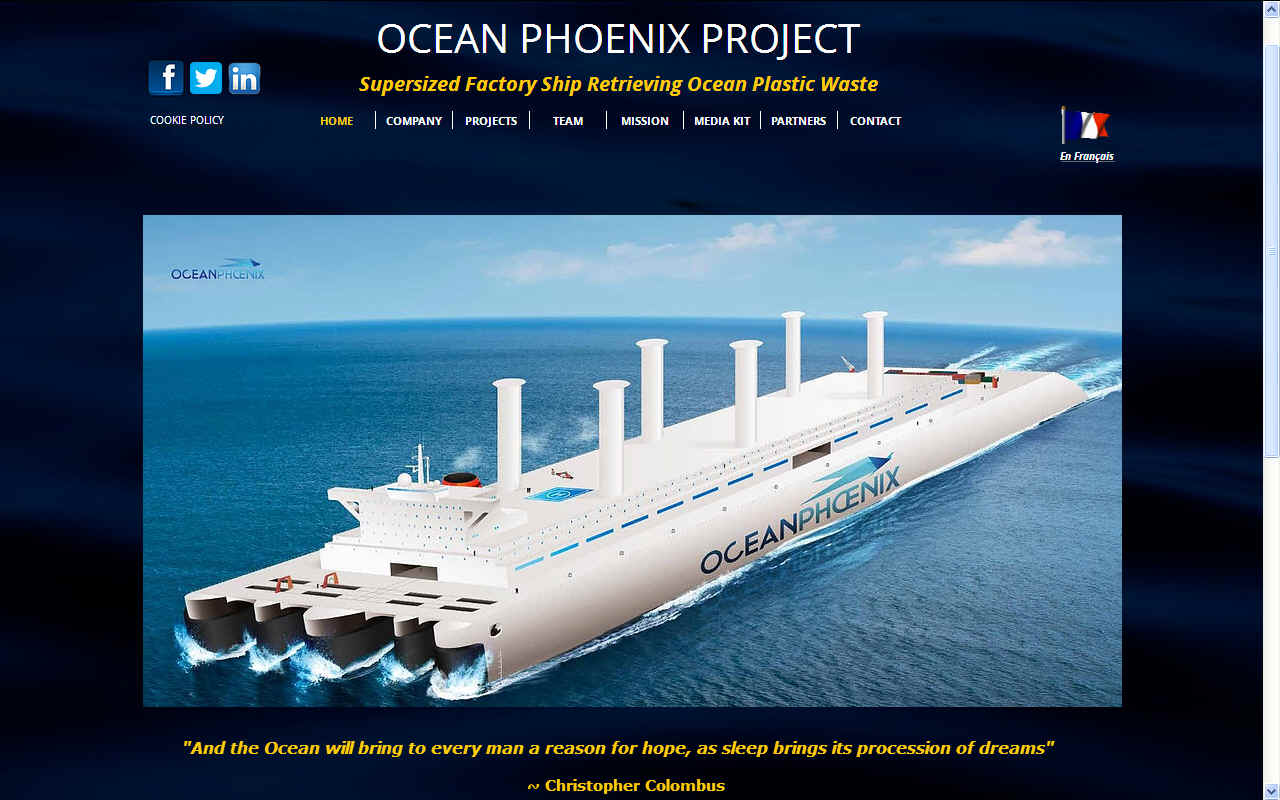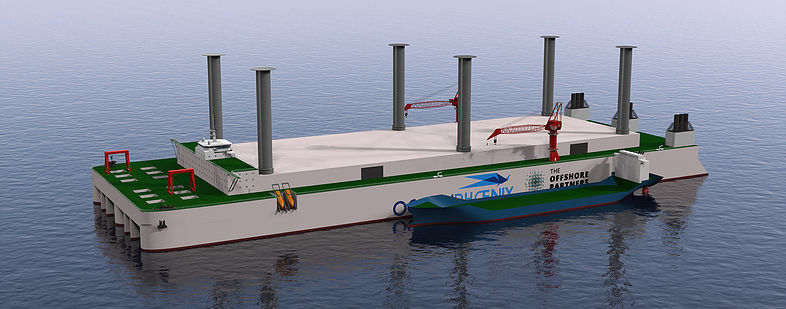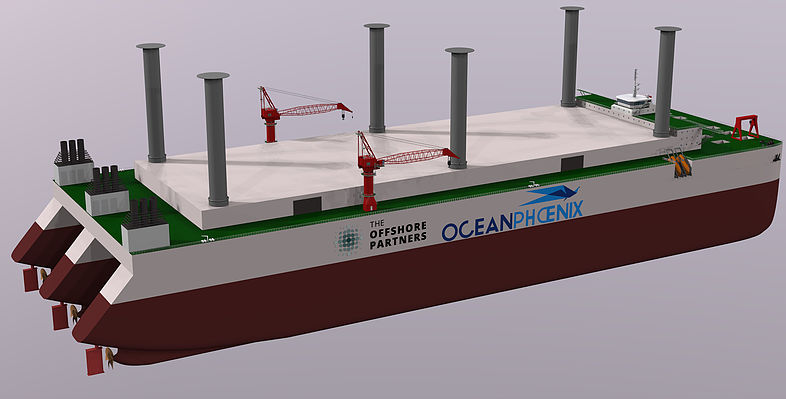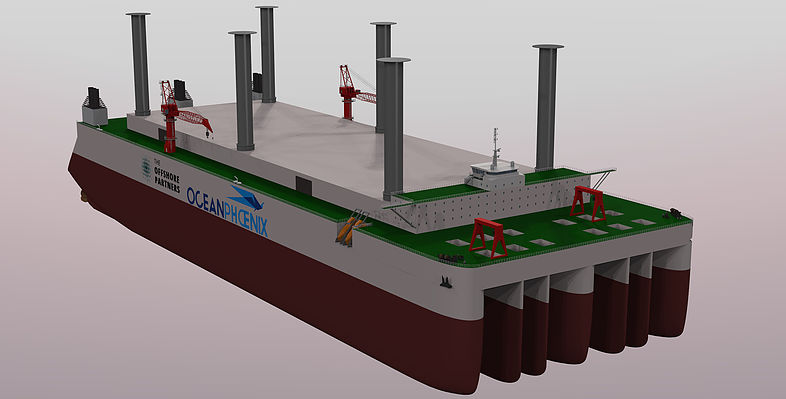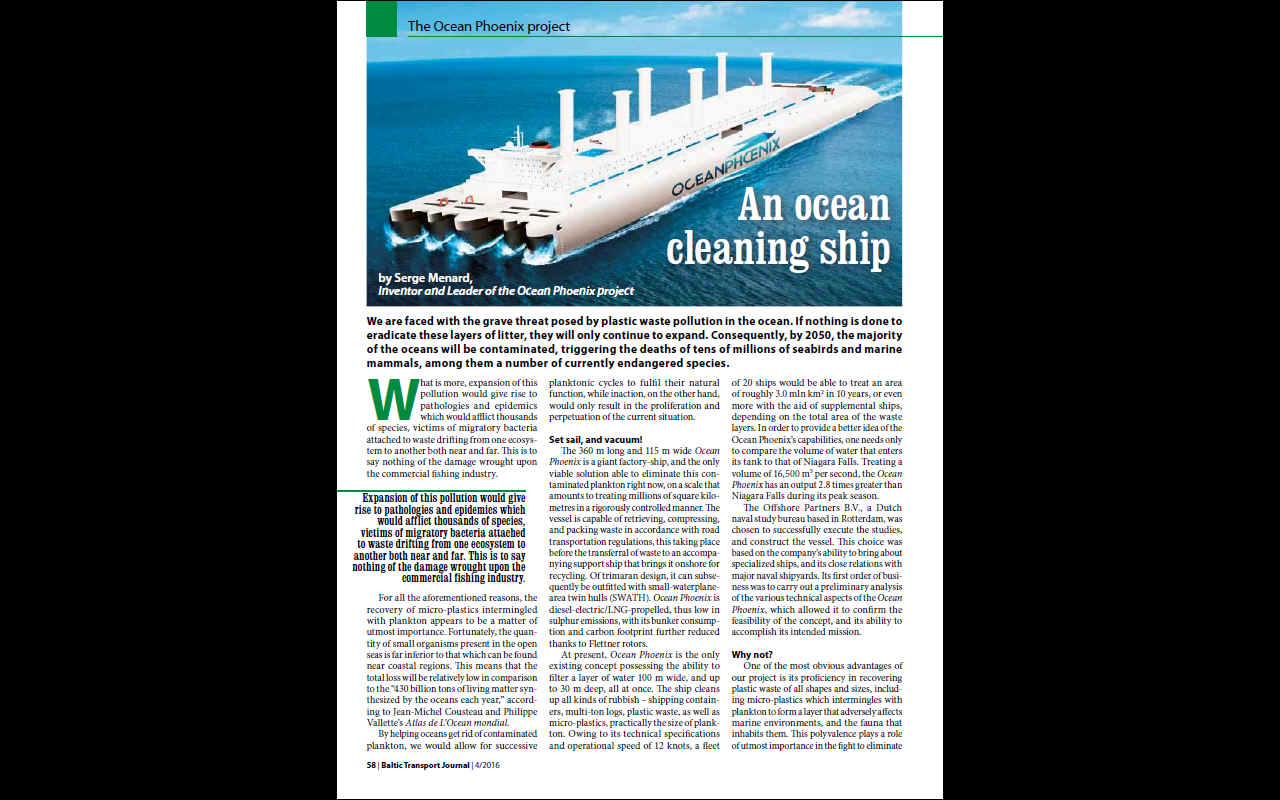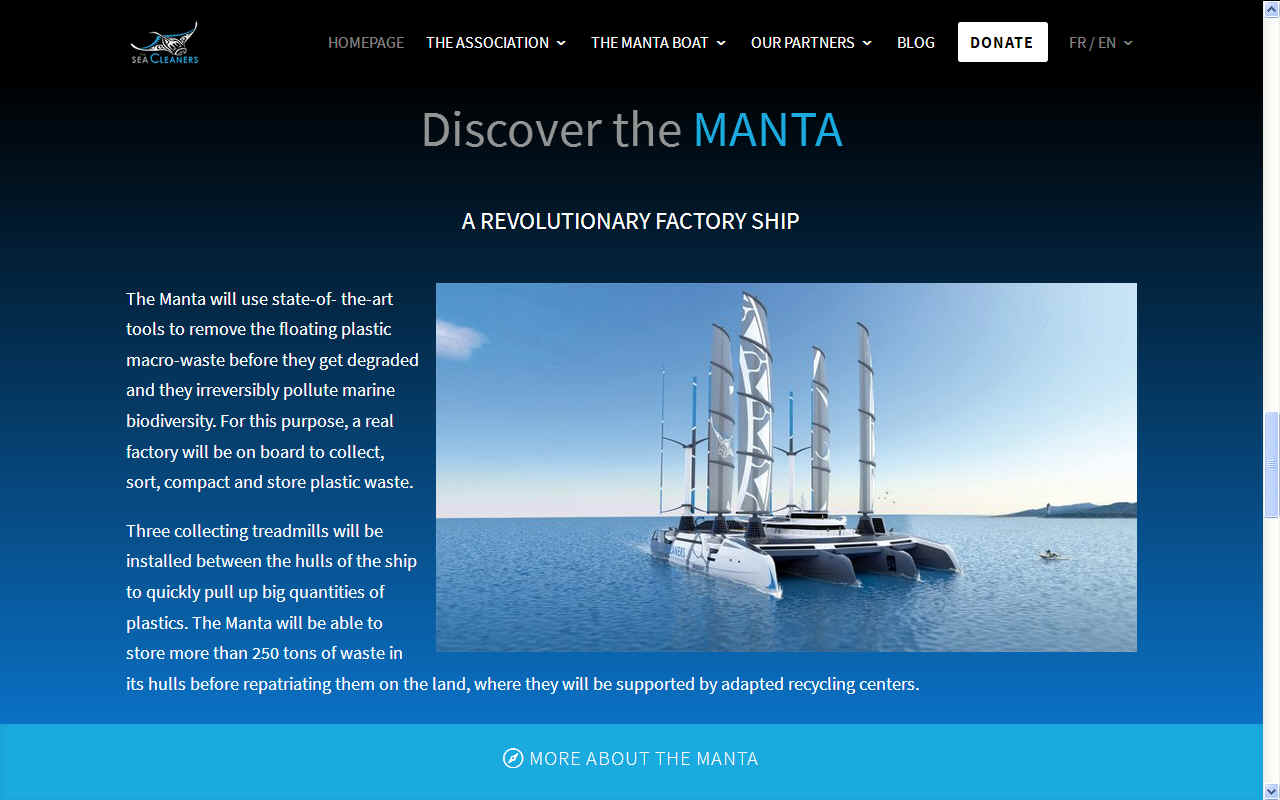|
OCEAN PHOENIX PROJECT
ABOUT - CONTACTS - FOUNDATION - HOME - A-Z INDEX
OCEAN PHOENIX 360: Is a trimaran or triple hulled leviathan that eats diesel or LNG to seek and suck up plastic waste from our oceans. Serge Menard suggests that 40 of these giant tankers might clean up the oceans. This is a larger version of Yvan Bourgon's Manta sea cleaners, save that the smaller ship is sail and wind turbine powered.
The OCEAN PHOENIX 360 is a concept for a giant factory-ship said by the designer to be capable of eradicating the millions of tons of plastic waste that have accumulated in the North Pacific and other Oceans around the world.
Propulsion is to be diesel-electric / LNG or hydrogen, which the designer says will allow an optimal reduction of emissions of sulfur and carbon. Though the cost of diesel, LNG or hydrogen as burned fuel has to be added to the operational cost of the vessel, potentially adding a financial impediment compared to Boyan Slat's booms that use ocean currents as the transport medium.
TECHNICAL SPECIFICATION
>>
360m in Length (393 Yd)
OCEAN PHOENIX 360 claims to be capable of retrieving, compressing, and packing waste in accordance with road transportation regulations, this taking place before the transferal of the payload to an accompanying support ship that will take it onshore for recycling.
The
specification is not yet cast in stone, with the designer
suggesting subsequent outfitting with 'SWATH' hulls. In a patent-protected
variant. Apparently, the ship can be of single-hull design or
a multihull design. We would have said that a SWATH
hull was impractical for what is after all a cargo vessel,
where the displacement has to change markedly as the holds
fill with plastic.
NIAGARA FALLS
The designer invites comparison of the ship's processing capabilities as the volume of water that enters its tank to that of Niagara Falls. An astounding treatment volume of 16,500 m³ per second is claimed. Hence, the Ocean Phoenix is claimed to have an output 2.8 times greater than Niagara Falls during its peak season.
The Ocean Phoenix 360
is said to be capable of handling shipping containers, multi-ton logs (occasionally found where currents converge), plastic waste (and other forms of debris) and micro-plastics, practically the size of
plankton.
HOW MANY SHIPS?
Recent studies indicate that the North Pacific layers range from 1.4
to 3.4 million square kilometers. The Phoenix project claims
that a fleet of 20 ships could treat an area of roughly 3
million square kilometers in 10 years, or more with supplemental ships, depending on the total area of the
waste layers. The treatment of the total surface area of the planet’s ocean plastic waste will likely require a fleet estimated at 40 Ocean Phoenix vessels.
Ocean Phoenix Project The Offshore Partners B.V. Date: 2Oth May, 2016
The patented idea behind the mission equipment, necessary to plough the seas and retrieve the plastic debris will be applied and further developed, parallel to the design phases of the vessel and is seen as an integral factor towards the success of the project.
We wísh you every success in securing the financial funding necessary, in order that we can continue with the Ocean Phoenix Project and look forward to eventually seeing the vessel completed and operational.
Best regards,
Graham Hardie (Global Business Manager) Josso van Boxtel Djeck Bogaarts (Engineeri Manager)
PHOENIX CONTACTS
SAS OCEAN PHOENIX
Tel: +33 675 662 687
LINKS & REFERENCE
http://www.theoffshorepartners.com/ https://www.oceanphoenixproject.com/mission
MANTA: Is a multihull designed to carry three conveyor belts to lift macro plastic into an onboard processing facility. Power comes from four wing sails, two darrieus wind turbines and two thousand square meters of solar panels.
This website is provided on a free basis as a public information service. copyright © Cleaner Oceans Foundation Ltd (COFL) (Company No: 4674774) 2018. Solar Studios, BN271RF, United Kingdom. COFL is a charity without share capital. The names AmphiMax™, RiverVax™ and SeaVax™ are trade names used under license by COF in connection with their 'Feed The World' ocean cleaning sustainability campaign.
|
